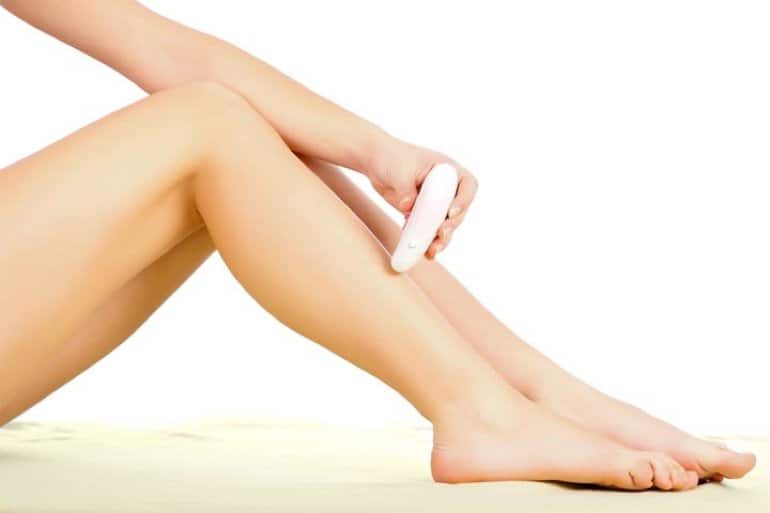When it comes to hair removal, we understand the desire for long-lasting, smooth results. This is where the marvel of epilation comes into play, as it outshines other methods such as shaving and waxing. However, for those new to the world of epilization, figuring out how to use an epilator effectively might pose a challenge.
Fear not, because we are here to guide you through the process of using an epilator. Not only will you enjoy a silky-smooth finish, but you can also eliminate the mess that often accompanies depilatory creams. With some practice and guidance, achieving the flawless skin you seek will be well within your reach.
Chapter Overview
Guide To Perfect Epilation Experience
Step 1 – Choose Your Epilator
With numerous epilators available, selecting the best one for you requires doing some research. Generally, higher-quality epilators have more tweezers, can work in wet and dry conditions, and can catch hold of shorter hairs. Find one that suits your preferences and budget.
Step 2 – Plan
New to epilating? Ensure you set aside ample time to do it at a relaxed pace. Keep in mind that epilating takes longer than shaving. Consider doing it in the evening so that any redness goes down overnight.
Step 3 – Prepare Your Skin
Skin preparation is crucial for a successful epilation experience. Exfoliate your skin a day or two before epilating to remove dead skin cells and reduce ingrown hairs. Use hypoallergenic exfoliators for the best results.
If you have a non-waterproof or corded epilator, make sure your skin is dry before starting. Patting some baby powder can help you see the hairs more easily.
Step 4 – Start Working
Begin by turning on the epilator and starting with a less sensitive area, like the lower legs. Hold the epilator at a 90-degree angle to your skin, without applying pressure.
Work at a 90-degree angle throughout the process, as any other angle won’t allow the tweezers to pick up hairs. Use your free hand to pull your skin taut, making hair removal easier and less uncomfortable.
Glide the epilator along your skin against the direction of hair growth, working slowly to give the tweezers more chances to pick up hairs.
Step 5 – Aftercare
After epilating, it’s important to take care of your skin. Redness, inflammation, and bumps are normal and will fade in a few hours. Each time you epilate, these symptoms should become less noticeable.
Soothe your skin with aloe vera or another moisturizer containing soothing ingredients.
Epilation vs. Waxing
When comparing epilation and waxing as hair removal methods, there are a few key differences we should consider:
- Duration of hairlessness: While both methods remove hair at the root level, epilation can last up to 6 weeks, whereas waxing lasts a maximum of 4 weeks.
- Hair length requirement: Waxing needs hair to grow back to at least a ¼ of an inch before the next treatment. In contrast, a good epilator works effectively on hair as short as 1/8 of an inch.
- Price: Although a high-quality epilator can have an initial investment of up to $200, it proves more cost-effective in the long run. Professional waxing can add up, and you need to purchase waxing strips repeatedly. A top-tier epilator can last for years, making it a more economical choice.
- Pain level: Waxing tends to be less painful initially, but many individuals become accustomed to the sensation of epilation after a few sessions.
- Time commitment: Epilation becomes a quicker process once you become familiar with the technique, taking only a few minutes per area. Waxing, on the other hand, demands more time for heating the wax, applying, and positioning strips on your body.
In conclusion, both epilation and waxing have their pros and cons, but ultimately, epilation emerges as a more efficient and cost-effective hair removal method.
Tips For Using An Epilator
To make the most of your epilating experience and achieve the best results, follow these practical tips:
- Opt for a wet/dry model to allow for epilating in the shower, making the process less painful for beginners.
- Choose an epilator with a small LED light to reveal finer and lighter hairs that may be missed otherwise.
- Epilate in the evening when you’re more relaxed and any redness or irritation will likely fade overnight.
- Shower a few hours before epilating to clean your skin and make hairs easier for the epilator to grasp.
- In sensitive areas, be sure to pull your skin taut with your free hand.
- Epilate when the room is warm, as your pores will be more relaxed and your skin less sensitive.
- Exfoliate a few days prior to epilating to remove dead skin cells and prevent ingrown hairs.
- Be mindful of your menstrual cycle; epilate after your period when sensitivity to pain is reduced.
By following these tips, you’ll be on your way to smooth, hair-free skin. Remember to maintain a steady 90-degree angle with the epilator, work against the direction of hair growth, and keep up with regular upkeep for the best results. And don’t forget to moisturize and use aloe vera gel or witch hazel to soothe any irritation after the process.

